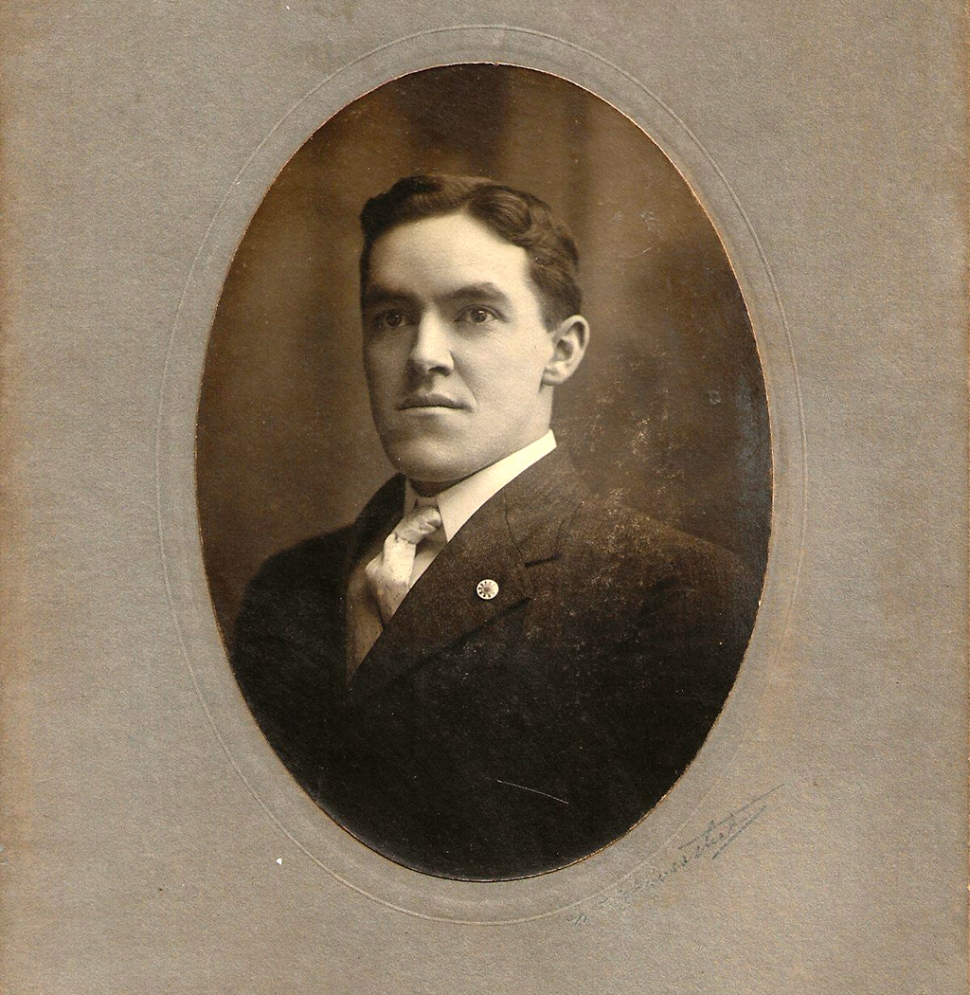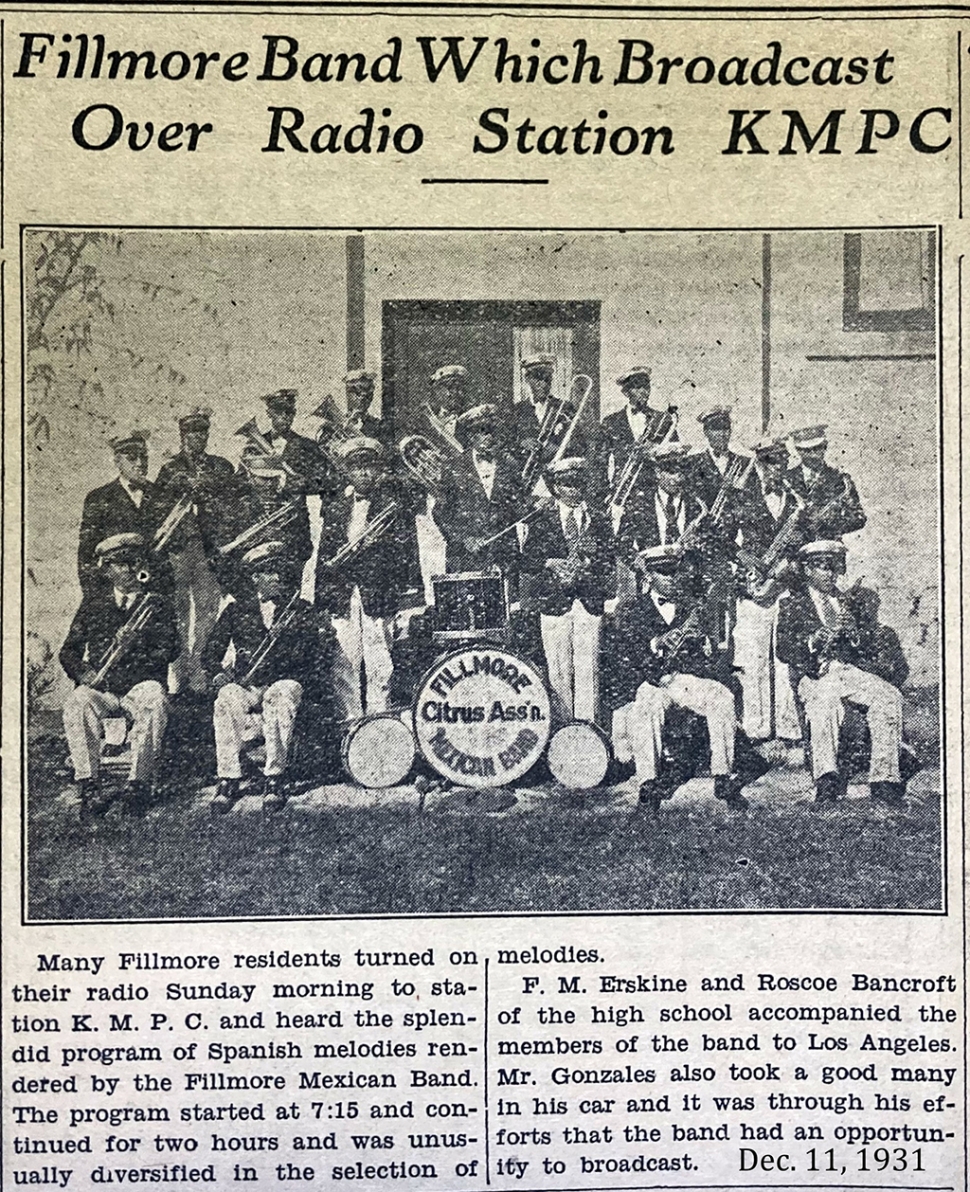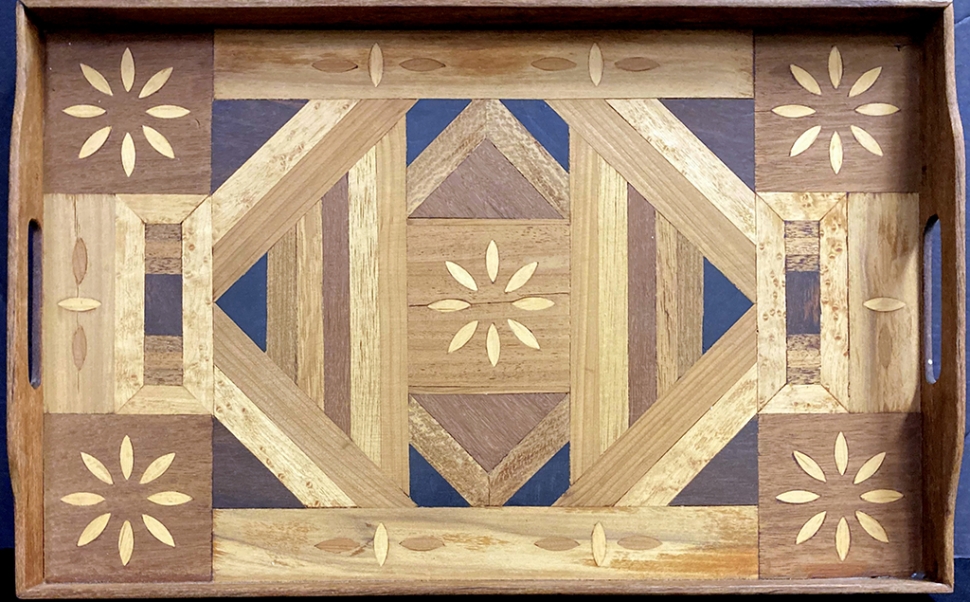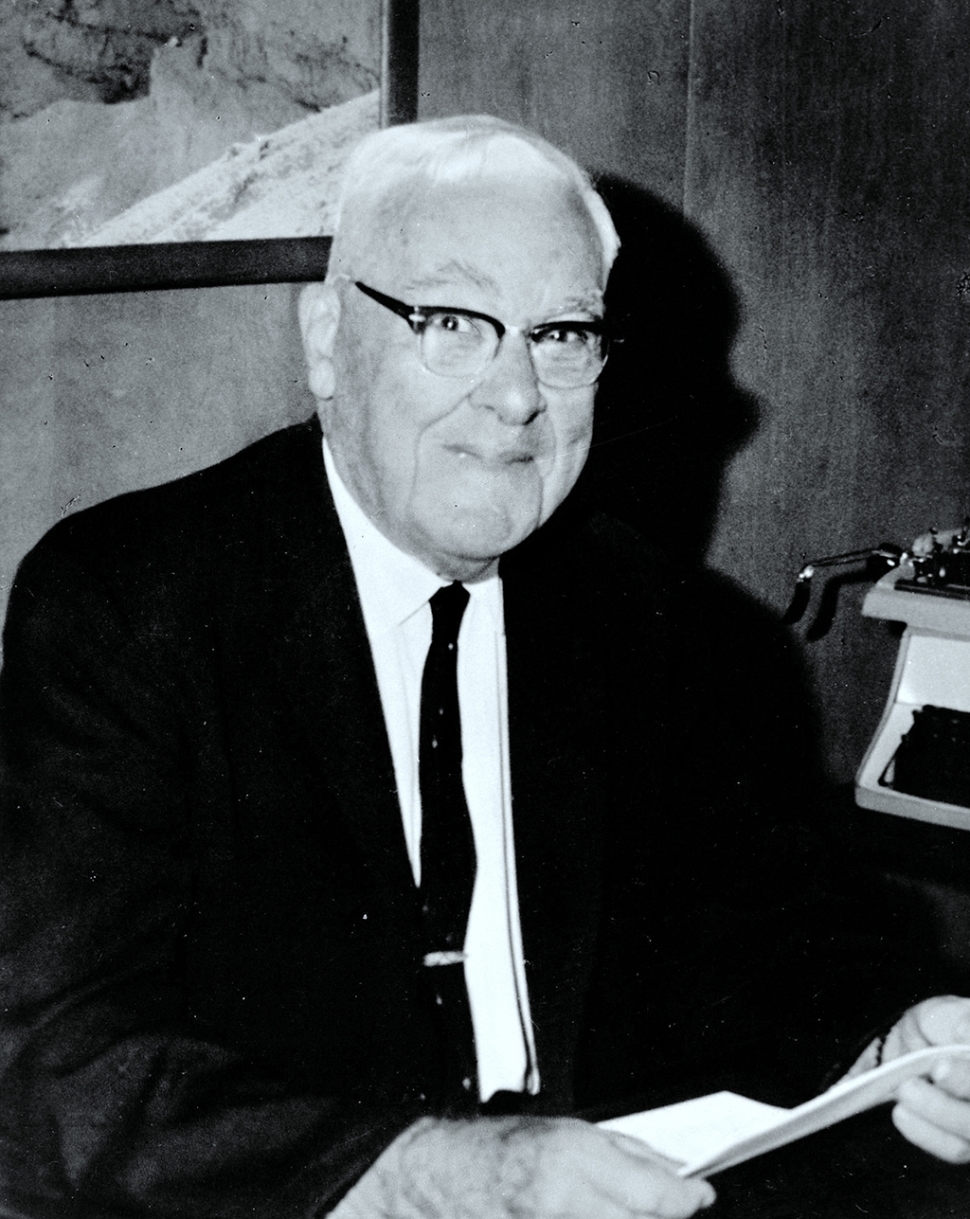|
The Story of Fillmore’s Frank Erskine
By Gazette Staff Writers — Wednesday, September 22nd, 2021
 Frank Erskine circa 1906. Frank came to Fillmore from Vermont in 1913 and later formed the Fillmore Citrus Protective District. Photos Courtesy Fillmore Historical Museum. Frank Erskine c 1965 Caricature of Fillmore Herald editor Hamilton Riggs at the Artists' Barn Above is a newspaper article regarding Fillmore Citrus Association Mexican Band was set to perform on December 11th, 1931 via radio performance. This band was formed back in 1925 along with the Fillmore American Band which both had 20 musicians. Photo Courtesy Fillmore Historical Museum More photos online at www.fillmoregazette.com Tray made by Frank Erskine in the Museum Collections  Newspaper article about Fillmore Citrus Association Mexican Band set to perform on December 11th, 1931 via radio performance. This band was formed in 1925 along with the Fillmore American Band which both had 20 musicians.  Tray made by Frank Erskine in the Museum Collections.  Frank Erskine circa 1965. Courtesy Fillmore Historical Museum You don’t have to serve as mayor or be elected to the city council to have an impact on your community. That’s true today and was true one hundred years ago. In 1913 a young man from Vermont came to Fillmore and was a force for good in the town. His name was Frank Erskine. Frank was born in Williamstown, Vermont in 1879. His parents were farmers, though as Frank would later say, “Farms in Vermont are mostly rocks.” He had five siblings, four of whom died before Frank was 16 years old. His father, Henry Erskine, died when Frank was twenty. His mother, Jane, sold the farm and with his portion of the proceeds, Frank entered collage attending Albany Business College where he eventually taught. He developed one of the first high school business courses that was taught in New York state. While in Albany, he married Miss Susan Benedict from his hometown. It was her brother-in-law, OrlowGriffen, who suggested Frank come to California to take a position with a fruit growers’ association in Whittier. He and his wife, Susan, made the move to California. In 1913, Frank was told about a struggling fruit growers’ association in a place called Fillmore and decided to make the move to Ventura County. Erskine was to say that for the first years he battled competition and bugs with red and purple scale threatening the local citrus crops. He and David Felsenthal were instrumental in forming the Fillmore Citrus Protective District and eventually the Fillmore Insectary which focused on biological control of pests. He left the Citrus Association in 1929 at age 50. Not able to sit idle, he was one of the founding directors of Ramona Savings and Loan and remained a director for 38 years, and vice-president for thirty-six. The purpose of Ramona was to help local families buy homes – even during the Great Depression. One advertisement Frank wrote read, “We will pay withdrawals on demand. We could use additional funds to lend.” The ad was effective because within seven days business transactions doubled.Frank retired from Ramona Savings and Loan in 1966. Frank had played the cornet in Vermont at churches and other venues. A story has been told that when Frank Erskine first got off the train in Fillmore, he was carrying a cornet case. The first person to see him was C. A. Harmonson (the initials stood for Columbus Arizona) who quickly recruited him to play with the band his family participated in (The Harmonson Rood Orchestra). One of the things Frank Erskine is most remembered for is his association with local bands. One band he was in would play concerts on Saturday nights on the site of the Masonic Building under the pepper tree. Others in the group included Al Haase, Ken Howard, Lawrence and Sidney Peyton, Clarence Arrasmith, Frank Middlesworth and Bobby Stiles. His motto, ‘money spent for music is a sound investment” was put to the test. By 1925, he had formed two bands, the Fillmore American Band and the Fillmore Citrus Association Mexican band, each of about twenty musicians.Both bands wore red bow ties with white pants and shirts with suit jackets.The Mexican band “was first laughed at and then complimented when it won top prize at the county contest called the “Esteidfod’ that we used to have in Oxnard,” he said in an interview in 1970. An advertising card for the bands read, “Fillmore American Band and the Fillmore Citrus Association Mexican Band can provide instrumentation in any number of men from 16 to 50 for music for any occasion.” They were soon in big demand. Erskine particularly enjoyed combining the two bands. The groups frequently performed together as was noted in a Fillmore Herald article in a June 9, 1927,talking about a series of concerts the combined band would be giving in “front of the old High School.” The Mexican band, led by Manuel Lucero, performed a two-hour broadcast on Radio KMPC in 1931. Lucero also composed a piece called “The Erskine March.”Unfortunately, only the 1st Cornet part has survived but it is both challenging and tuneful. The members of the band also combined their efforts to purchase a cornet for Mr. Erskine – it is on display in the Museum. He was very active in the Rotary serving as president for the 1937-1938 term.Besides being a musician, he was also an artist, with his caricatures rivaling those of Lawrence Hinckley’s. For the March, 1937 Rotary Ladies’ Night he did an entire pamphlet of “Candid Camera Counterfeits of Prominent Phillmore Personages.” Each Rotary member was lampooned with his own special illustration. In retirement he took up marquetry, carefully creating designs on trays and other items from small pieces of wood. We have several examples of his detailed work in the Museum collection. Perhaps one of the least known of his activities was being Santa Claus to Fillmore’s children. Widowed three times, he had no children of his own. For twenty years (probably with the collusion of fellow Rotarian and Postmaster J K L Schwartz) he answered the children’s letters to Santa Claus. He was a friendly, but practical Santa. When a chimney-less child expressed concern that Santa would not visit him, Santa replied, “I dislike chimneys – all that soot in a place too narrow for me. I come in the front door like any other welcome guest.” To a child with an extensive wish list, “If I brought you all that stuff this year, you’d have nothing for next year. You divide that list up and expect to find maybe one-fourth of it, after I call on you this year.” Frank Erskine died in 1978 having just turned 99 years old. He was the last of his family and left no survivors, but did leave a large legacy to the community. |
